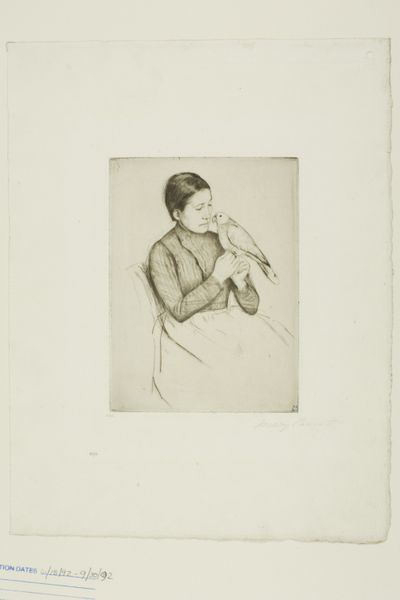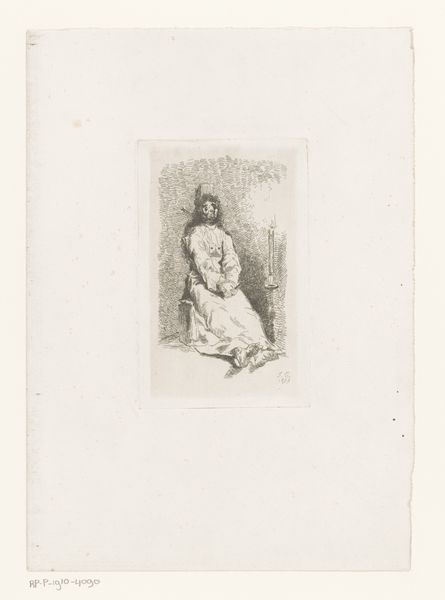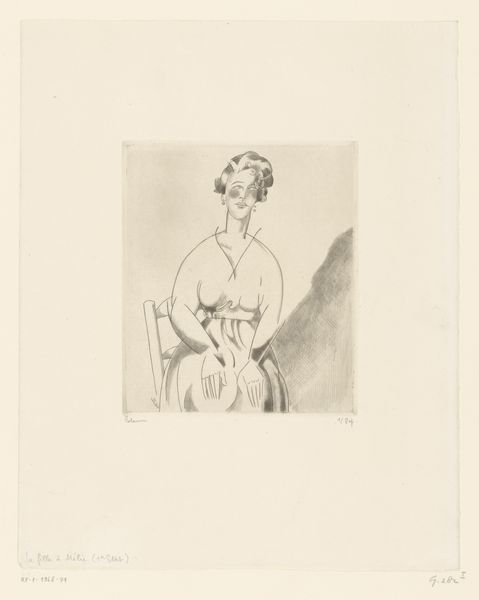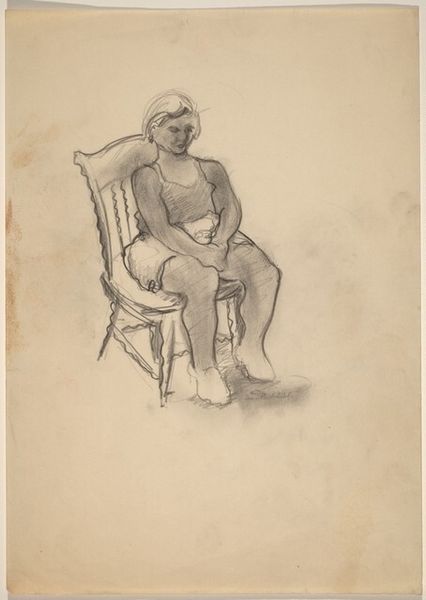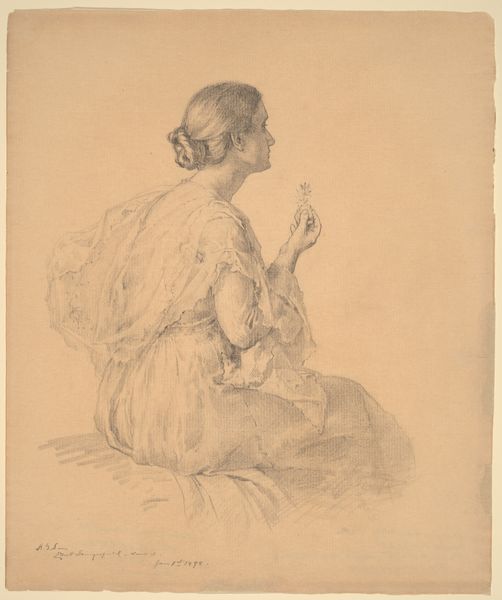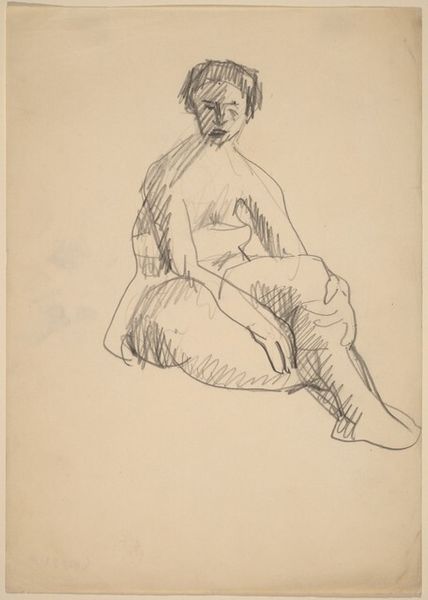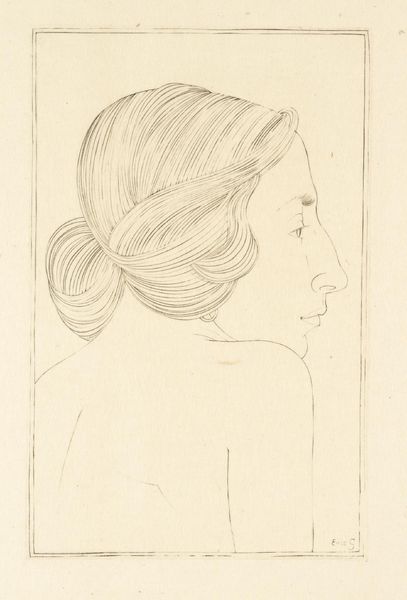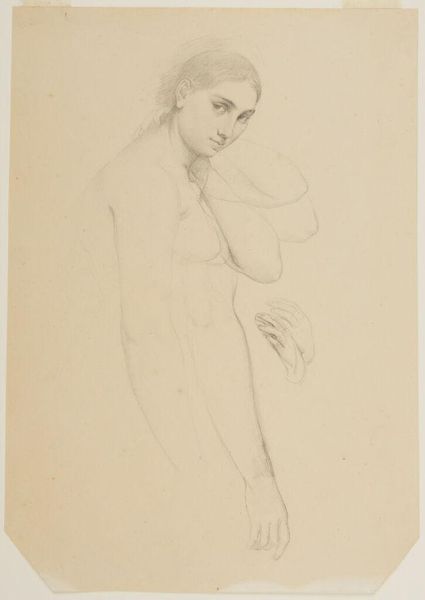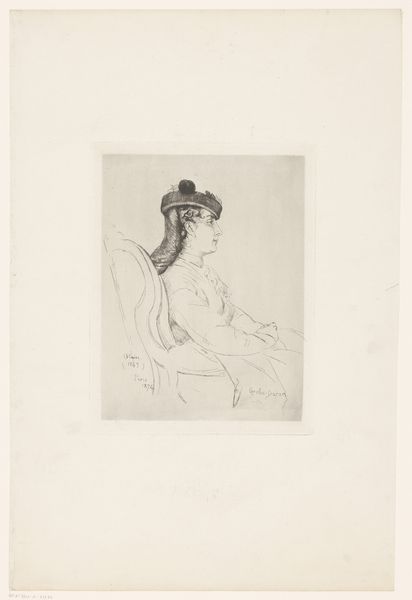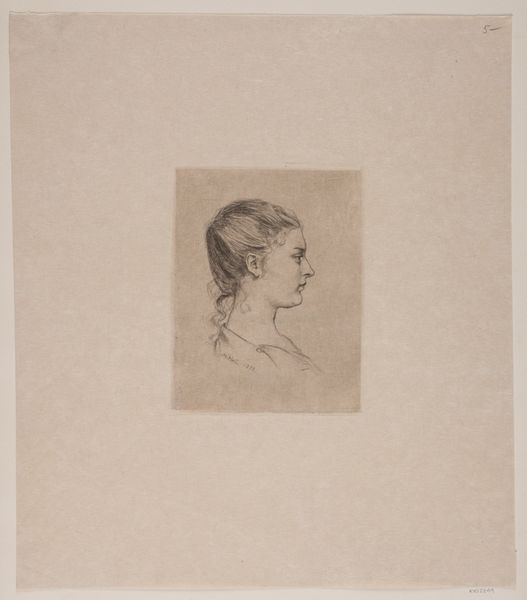
Dimensions: 6 1/4 x 4 11/16 in. (15.88 x 11.91 cm) (plate)11 7/8 x 8 13/16 in. (30.16 x 22.38 cm) (sheet)
Copyright: No Copyright - United States
Editor: Here we have Mary Cassatt's drypoint print, "The Parrot," created in 1891. There’s such a gentle quality to it; the woman and the bird almost seem to be sharing a secret. How do you interpret this work? Curator: It’s fascinating to consider Cassatt's portrayal of women in the late 19th century, especially within the context of Impressionism. Cassatt, alongside other female artists, often focused on domestic scenes, offering insight into the lived experiences of women, but sometimes got pigeon-holed there. In this image, there’s such a subtle connection being created, one of almost shared containment... What does this print say about how women related to their domestic spaces and even to each other within the bounds of societal expectations at that time, do you think? Editor: That idea of 'shared containment' is interesting! It wasn't something I initially considered, but the woman's quiet demeanor now feels like a reflection of those limitations. Was Cassatt perhaps challenging or maybe just commenting on these gendered constraints? Curator: It’s complex. Cassatt navigated a male-dominated art world while depicting a female-centric world. “The Parrot”, created in drypoint, shows how a specific technique helped define a subject, bringing it to larger questions around selfhood and imposed limits, gendered gazes, and the negotiation of power. Perhaps her focus wasn't a direct challenge, but more of an intimate exploration, using art to give visibility to a very restricted world. Do you agree? Editor: Yes, that makes sense. It feels less like a loud protest and more like a quiet, powerful observation of her world, a space she both inhabited and observed with a critical eye. Curator: Precisely. And by capturing that world, Cassatt subtly shifted the narrative, claiming space for female voices within the art historical canon and broadening the idea of Impressionism to embrace pressing questions around gender identity. Editor: This piece definitely sparked a new understanding for me, especially when thinking about art as a form of social commentary, even in quiet, domestic scenes.
Comments
No comments
Be the first to comment and join the conversation on the ultimate creative platform.
